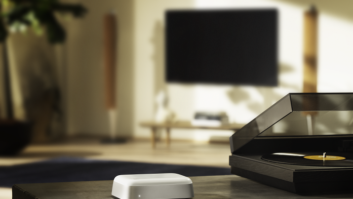The revenue generated by a hardware purchase is only the tip of the proverbial sales iceberg as content, services and accessories are quickly becoming retailer profit mainstays, according to some recent statistics from The NPD Group.
Steve Baker, NPD’s industry analysis VP, gave RetailVision attendees earlier this month the lowdown on what is going on at retail now and what he expects to take place going forward. The presentation covered everything from the impact of after-market sales, content and services to what products will be hot for the holiday selling season.
Consumers’ primary interests today are centered on being able to transfer information and content from one device to another and retailers have to create methods to take advantage of this, Baker said. This usage model encompasses tasks like taking music from a PC to a portable player and then moving it into a living room environment via something like an iPod speaker system.
“What is driving our business now is not devices, but content,” he said.
However, moving content around a home is a complicated task, well beyond the capabilities of many consumers. This leads to an even greater demand for services such as Geek Squad and IQ Crew. Baker expects these to become major sources of retailer income as consumers realize that their computers and networks are no longer a frivolous item, but something that has to work every day, and they will pay to keep their IT system up and running.
“If your PC is broken, that is important. You pay the plumber, you pay the handyman, and now you pay the geek,” Baker said.
The amount of services that will be required will only increase going forward as there is every indication that the public will keep buying IT products.
“There is no evidence that we’ve satisfied PC and notebook growth,” Baker said, “In the old days people had three TVs, now they have three or four computers, and this creates a huge appetite for digital products like digital cameras.”
The average add-on sale for a notebook, desktop computer or even an iPod now comprises a significant portion of the product’s sticker price, Baker said, making it even more important for sales associates to make sure the customer does not leave the store with just one box. Baker cited NPD data that has consumers spending an additional $314 for each notebook, $264 for each PC and $66 for each iPod bought.
Other items that found their way into a customer’s basket during a computer sale were input devices, carrying cases, extended warranties, external speakers, LCD monitors and additional memory.
The importance of add-on sales will not decline going forward, as NPD believes the iPod and notebook computers will continue to be sales drivers in 2006. However, these are not the only items expected to be on Christmas shopping lists.
In the TV category the biggest change for 2006, according to NPD, will be plasma’s total domination of the 40-inch and larger category. NPD expects 30.6 percent of all units to be plasma, up from 14.7 percent, while tube market share will fall to 16.8 percent from 39.8 percent. LCD will also make major inroads, comprising 7.4 percent of sales, up from less than 1 percent in 2005.
Other hot products centered on networking and content sharing will be the Sling Box, GPS, satellite radio devices enabling sharing, video-capable iPod, TVs with integrated wireless, and networked and internal storage.
MP3 players will remain an extremely potent category this year with the unit sales matching those of digital cameras, which had been the hot product category for the past several years.
Baker did warn that retailers will have to find methods to make up for expected lower profit margins on TVs in 2006, which he said have propped up retailers in past years. He suggested focusing on providing in-home technical services, Web-to-store deals and small business sales.
Baker also disputed the popular theory that gift cards were helping to extend the holiday selling season into January, particularly for CE and IT products. The average gift card was $42 in 2005, and that is not enough to buy a camcorder or digital camera. NPD found most gift cards were used to buy clothing, DVDs and groceries.
“A gift card will not change someone’s buying habit if they are buying a $3,000 plasma TV,” he said.
Even for lower priced accessory items, NPD found that the vast majority of these purchases took place in December, three times the amount purchased in November, January and February.













